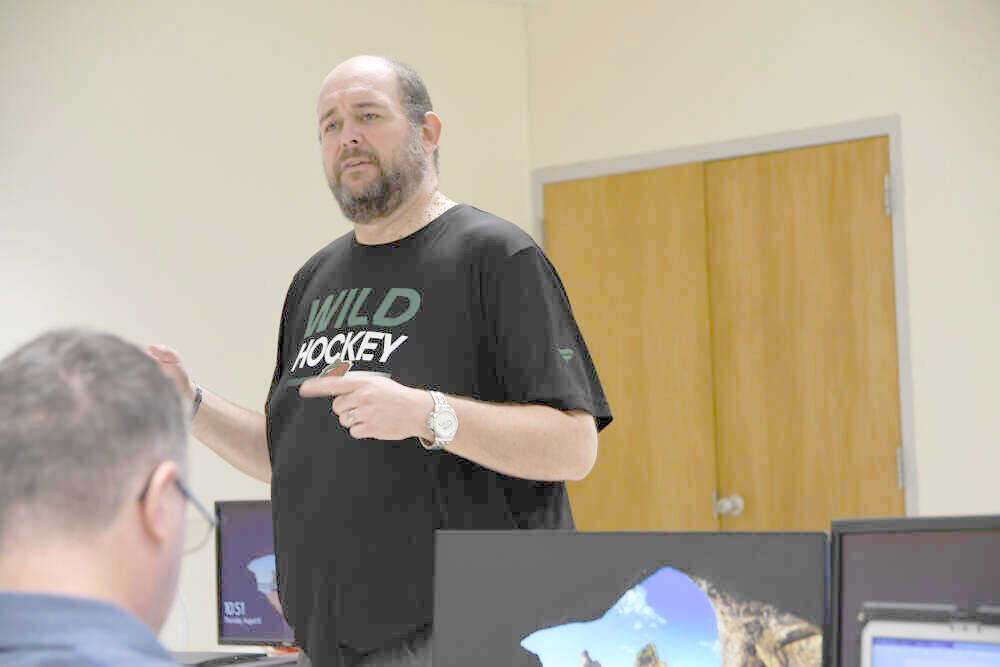Richland teacher educates MSHP on crash photography

ESSEX, Mo. — Kyle Carter has lived the life many journalists and photojournalists can only dream of.
His work has been on the cover of People, he has covered presidents and even the World Series.
But, after leaving journalism for a career as a financial advisor, there still was something missing from his professional portfolio.
“I’ve taught photography for a long time. As a journalist, I taught our interns,” said Carter. “I love teaching photography.”
Carter currently teaches personal finance and business law and even accounting, but the other hat he wears is teaching photography and supervising the yearbook committee at Richland.
This marks year 12 at Richland for Carter, who, on the side, teaches Missouri State Highway Patrol field officers how to properly photograph crash scenes, everything from angles to lighting.
“I have offered an adult photography class at night for 15, 16 years now. I have had kids as young as 9 take it, and I have had adults as old as 92 take it,” said Carter.
One of those students just happened to be Sgt. Clark Parrott — Troop E public information officer for the MSHP.
“Back in 2017, 2018, he took my class so he could use his camera better,” said Carter. “He said ‘I love this. Can you do one of these for just the troopers in Southeast Missouri?’ I ended up setting it up where I taught all of the crash reconstructions in Southeast Missouri.”
At that time, the MSHP had just purchased new Nikon cameras.
Two-to-three nights per week for three, four weeks, the officers took note of the ins and outs of proper photography mechanics.
“We went through everything, from aperture to setting your ISO (used for speed and lighting) to how to shoot filament inside of a bulb to see if the bulb was broken or if it was burned out. Because that is a major difference in a wreck,” said Carter. “We talked about striations on a seat belt, because if you have striations in a wreck and you have your seatbelt on, you are going to have striations on it where the seatbelt holds you in it. If there aren’t any, there’s a good chance you were not wearing it (the seatbelt).”
Striations are tiny parallel grooves.
“There is a lot of stuff like that. When I was in Tennessee and Mississippi, I worked a lot of crime scenes,” said Carter. “There were a lot of times when I would shoot for the local, county police.”
Carter taught one trooper class in the weeks leading up to the COVID outbreak. He did another in 2022, and then he taught two days this past July and two in August in Jefferson City.
Video production is another calling card for Carter.
“In 2022, I did a video series for them. They got a new Toughbook (laptop) that they use in their cars. They are trying to get all of the troopers to stop using their cell phones. Their phones can be called into court. They would rather them use their Toughbook as a camera, than to use their own personal cell phone where it could be subpoenaed into court,” said Carter.
The series centered on the Toughbook.
While Carter continues to educate the responders on the principles, he, too, has been educated.
Added Carter: “I have learned some of the technology they have. Some of their procedural things, the way they do things, some of the things they go through to do photos. At school, our rule is everything is double tapped. If we are taking portraits, everything gets two or three (photos). For them (officers), they have to do photo logs. Which means they have to write a cutline for every photo they have. At a scene, they may do 300, 500 images. They have to have some form of wording for every frame taken.”

